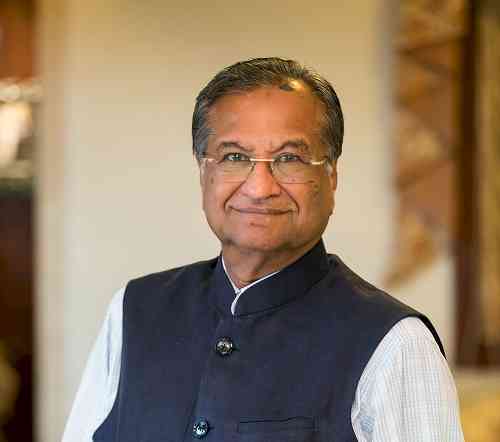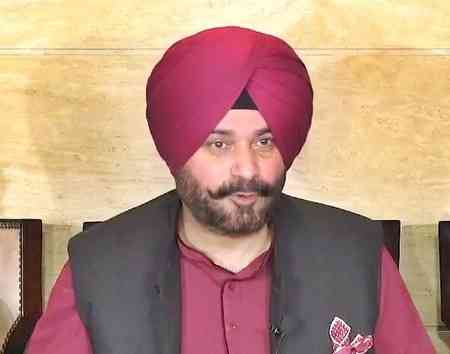India’s current and future trade scenario amidst domestic and global challenges during covid, post covid and way forward
This is the time for the government to repose trust on the exporters and boost their morale

by Sharad Kumar Saraf, President, FIEO
Target for 2020-21
Initially, looking into the lockdown challenges and projected decline in global trade, we expected 20% decline in our exports. However, two days back, the WTO trade estimates for the second quarter puts the contraction only at 13%. We are receiving lots of enquiries from countries where anti-China sentiments are high. Many of these enquiries have been converted into orders, as well. However, the demand in employment intensive sectors like gems & jewellery, apparels, footwear, handicrafts, carpets is still a challenge. We do not expect much improvement in demand. Therefore, we expect around 10% decline in India’s exports in the current fiscal. In case of a second wave, the contraction may reach 20%.
Sectors contributing to goods exports
The export recovery is likely to be led by pharmaceuticals, medical & diagnostic equipment, technical textiles, agri & processed foods, plastics, chemicals and electronics. Since the domestic demand for petroleum products is extremely low, we may see increasing exports of petroleum as well for such companies to sustain in business.
Strategy of Exporters in such time
We are suggesting members to look into 3 pronged strategy:
1) To focus on countries which are providing demand stimulus like US, UK and many other advanced and emerging markets;
2) Explore countries having high anti-China sentiments led by US including EU, Japan, South Korea, Australia, New Zealand, Canada, etc. and
3) Revisit economies depending on crude & commodities exports as prices of such products are likely to be subdued (Middle East, LAC and CIS)
Imports Substitution
We are encouraged by the statement of the Hon'ble Prime Minister focusing on imports substitution. Imports substitution should be an integral part of the Foreign Trade Policy as dollar saved is as good as dollar earned and both generate economic activity.
While an increase in tariff can be one way to achieve it, the more effective strategy would be to provide an ecosystem which addresses the cost disability of Indian manufacturing leading to such imports. Import substitution manufacturing should attract interest subvention on credit, offsetting inland freight disadvantage besides equalization of import tariff from free trade areas.
Views on Free Trade Agreements
India has not been able to gain much on FTAs as these were not targeted towards our major markets. We should focus on FTAs with our major export destinations like the US and EU. A BTIA with the EU has become all the more necessary as Vietnam has signed an FTA and Investment Protection Agreement with the EU.
India is competing with Vietnam in the EU market and such FTAs will give an edge to Vietnam over India particularly in apparel, leather goods, footwear, tea-coffee, furniture and electronics. Though India’s exports of electronics are not substantial, but in the years to come, we can see exponential growth in electronics imports due to a lot of investments flowing into the electronic sector led by an attractive fiscal support.
India-China Trade
India’s exports to China grew from US$ 16.5 to US$ 16.95 Bn in 2019 while imports declined from 73.8 Bn to 68.2 Bn in 2019. With the result, the trade deficit has come down to US$ 57.3 Bn from US$ 51.25 Bn.
However, at the same time, India’s trade deficit with Hong Kong has increased from a surplus position in one year. Our exports to Hong Kong in 2019 stood at US$ 11.5 Bn as against imports of 17.3 Bn imports with the Trade Deficit of US$ 5.8 in 2019 (against surplus of US$ 4 Bn in 2017).
We need to look into the totality of trade with China & Hong Kong. Much dependence on China can be reduced with short to long term plans. India has been able to reduce its import dependence in the mobile sector and the same can be replicated in other sectors of electronics, telecommunication and formulation of specialty in chemicals etc. We need to encourage Indian investments as well as FDI through fiscal incentive in such sectors.
And last but not the least, Covid-19 has created a very challenging time for the exporters. Due to prolonged Lockdown the exporters lost the orders and suffered substantial financial loss. The working capital is almost wiped out. Under these circumstances we need the government to support the exporters. However it is with regret that we find thousands of exporters are declared “RISKY” without assigning any reason. This is most unfortunate particularly at this time when the government needs to be sympathetic and understanding.
As soon as the exporter is declared RISKY by the customs, his Drawback and GST refund is stopped and all the containers are subjected to 100% check by the customs. This is leading to missing the vessels and expiry of Letter of Credits. The procedure for removing the RISKY tag is long, complicated and time consuming. This has been going on for the last 6 months and has caused irreparable loss to exporters. We have appealed to the Revenue Department that if they find any exporter RISKY, then a bond can be taken from him but under no circumstance his GST refund and other dues should be stopped.
In most cases it is found that the reason for declaring RISKY is only due to some technical error in the system and for this the exporters are paying a very heavy price. We have pointed out that exporters do KYC at 3 levels, while opening the Bank Account, taking Import-Export Code and while registering with Export Promotion Councils. It is impossible that the exporter would simply vanished. There are enough investigation agencies with the government to catch the errant exporters. This is the time for the government to repose trust on the exporters and boost their morale.


 cityairnews
cityairnews 








